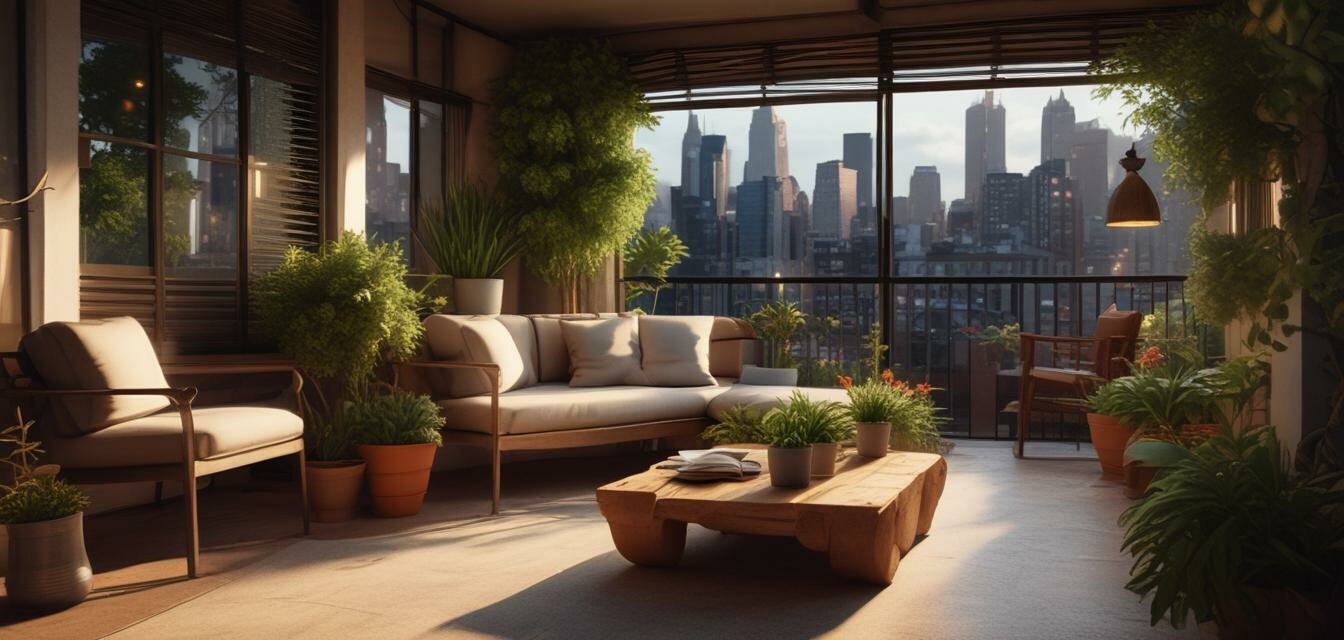
Tips for creating a relaxing balcony garden
Key Takeaways
- Choose the right plants to create a vibrant atmosphere.
- Incorporate comfortable furniture for relaxation.
- Utilize soft lighting and decor to enhance ambiance.
- Consider privacy and shelter elements.
- Focus on maintenance for a sustainable garden.
Creating a relaxing balcony garden can transform your outdoor space into a tranquil oasis amidst the hustle and bustle of urban life. By carefully selecting plants, furniture, and decor, you can establish a serene environment perfect for unwinding after a long day. In this guide, we’ll explore several essential tips to help you design a calming balcony garden that invites you to relax and enjoy.
Choosing the right plants
The first step in creating a peaceful balcony garden is selecting plants that promote a calming atmosphere. Here are some considerations:
- Opt for plants with soothing colors, such as blues, greens, and soft pinks.
- Use aromatic herbs like lavender and mint to engage your senses.
- Consider leafy plants that create a lush, green backdrop for relaxation.
Recommended plant types
| Plant Type | Benefits |
|---|---|
| Lavender | Calming scent and beautiful blooms. |
| Sage | Fragrant foliage, great for cooking. |
| Ferns | Adds greenery and improves air quality. |
| Succulents | Low-maintenance and visually appealing. |
Furniture selection for comfort
Comfortable furniture is essential to encourage relaxation in your balcony garden. Here are some tips for selecting the right pieces:
- Choose weather-resistant furniture for durability.
- Look for seating options like lounge chairs or cushioned benches.
- Consider adding a small table for drinks or snacks.
Furniture layout suggestions
Proper layout enhances usability and comfort. Consider these ideas:
- Position furniture to face a beautiful view or sunset.
- Group seating areas for conversation or solitude.
- Leave enough space for plants to flourish around seating.
Enhancing ambiance with lighting
Lighting can significantly influence the mood of your balcony garden. Use these tips to create a soothing atmosphere:
- Incorporate string lights or fairy lights for a soft glow.
- Use lanterns or candles for a cozy feel in the evenings.
- Install solar-powered garden lights to save energy.
Lighting placement ideas
Strategic lighting placement can enhance the garden's beauty:
- String lights can outline the balcony railing.
- Place lanterns at the base of potted plants.
- Highlight focal points with directed spotlights.
Creating privacy and shelter
For true relaxation, consider how to create privacy in your balcony garden. Options include:
- Using tall plants or trellises with climbing plants for natural barriers.
- Incorporating outdoor curtains for a cozy nook.
- Adding a canopy or umbrella for shade on sunny days.
Maintaining your balcony garden
Regular maintenance ensures your balcony garden remains an inviting escape. Here’s how to keep it thriving:
- Water plants regularly, but avoid overwatering.
- Prune dead leaves and spent flowers to promote growth.
- Fertilize appropriately for the types of plants selected.
Beginner tips for balcony gardening
- Start small with a few selected plants.
- Research specific care requirements for each plant.
- Monitor light and weather conditions regularly.
- Join online gardening forums for advice and support.
Pros
- Creates a personal escape from urban life.
- Encourages relaxation and mindfulness.
- Enhances the overall aesthetic of your living space.
Cons
- Requires regular maintenance and care.
- Limited by space and light availability.
- Pest management may be needed.
Conclusion
Incorporating these tips into your balcony garden design can create a peaceful retreat within your urban dwelling. By selecting the right plants, furniture, and lighting, you can enjoy a relaxing space that offers an escape from the busy city outside. For more insightful advice on balcony gardening, check out our Gardening Tips section, where you can find additional resources for making the most of your outdoor space.